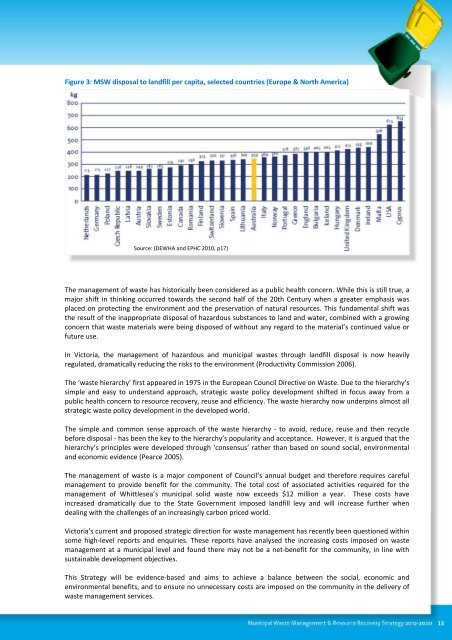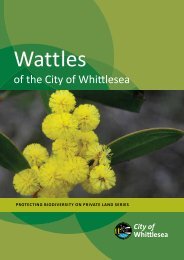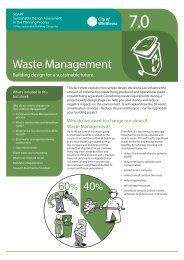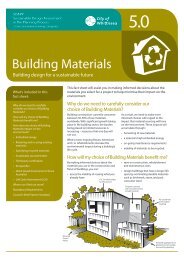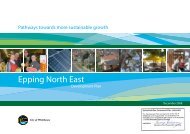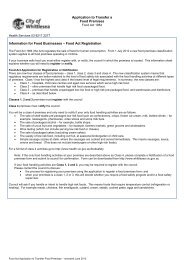Waste Management Strategy - full version - City of Whittlesea
Waste Management Strategy - full version - City of Whittlesea
Waste Management Strategy - full version - City of Whittlesea
Create successful ePaper yourself
Turn your PDF publications into a flip-book with our unique Google optimized e-Paper software.
Figure 3: MSW disposal to landfill per capita, selected countries (Europe & North America)Source: (DEWHA and EPHC 2010, p17)The management <strong>of</strong> waste has historically been considered as a public health concern. While this is still true, amajor shift in thinking occurred towards the second half <strong>of</strong> the 20th Century when a greater emphasis wasplaced on protecting the environment and the preservation <strong>of</strong> natural resources. This fundamental shift wasthe result <strong>of</strong> the inappropriate disposal <strong>of</strong> hazardous substances to land and water, combined with a growingconcern that waste materials were being disposed <strong>of</strong> without any regard to the material’s continued value orfuture use.In Victoria, the management <strong>of</strong> hazardous and municipal wastes through landfill disposal is now heavilyregulated, dramatically reducing the risks to the environment (Productivity Commission 2006).The ‘waste hierarchy’ first appeared in 1975 in the European Council Directive on <strong>Waste</strong>. Due to the hierarchy’ssimple and easy to understand approach, strategic waste policy development shifted in focus away from apublic health concern to resource recovery, reuse and efficiency. The waste hierarchy now underpins almost allstrategic waste policy development in the developed world.The simple and common sense approach <strong>of</strong> the waste hierarchy - to avoid, reduce, reuse and then recyclebefore disposal - has been the key to the hierarchy’s popularity and acceptance. However, it is argued that thehierarchy’s principles were developed through ‘consensus’ rather than based on sound social, environmentaland economic evidence (Pearce 2005).The management <strong>of</strong> waste is a major component <strong>of</strong> Council’s annual budget and therefore requires carefulmanagement to provide benefit for the community. The total cost <strong>of</strong> associated activities required for themanagement <strong>of</strong> <strong>Whittlesea</strong>’s municipal solid waste now exceeds $12 million a year. These costs haveincreased dramatically due to the State Government imposed landfill levy and will increase further whendealing with the challenges <strong>of</strong> an increasingly carbon priced world.Victoria’s current and proposed strategic direction for waste management has recently been questioned withinsome high-level reports and enquiries. These reports have analysed the increasing costs imposed on wastemanagement at a municipal level and found there may not be a net-benefit for the community, in line withsustainable development objectives.This <strong>Strategy</strong> will be evidence-based and aims to achieve a balance between the social, economic andenvironmental benefits, and to ensure no unnecessary costs are imposed on the community in the delivery <strong>of</strong>waste management services.13


